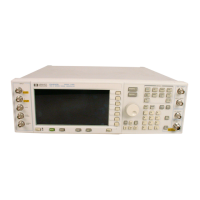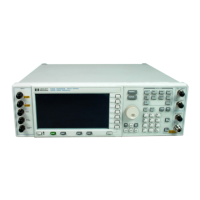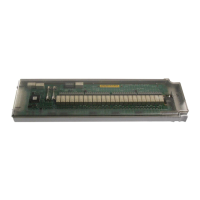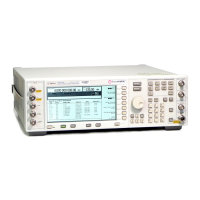Using Wideband CDMA ESG-D Series Option H98 Signal Generators
Understanding Time Offsets
3-8 Manual Supplement
Understanding Time Offsets
TSector
Adjustment range: 0 to 2560 chips
Default: 0 chips
TSector in Downlink Mode
Refer toFigure 3-1 on page3-9. In downlink mode, TSector adjusts the Perch radio frame
timing and long code relative to the BTS reference System Frame Number Reset output at
the DATA OUT rear-panel connector. This is accomplished by adjusting the offset (in
number of chips) from the falling edge of the System Frame Number Reset to the first
symbol of the Perch radio frame and long code phase zero, measured at the RF output.
TSector in Uplink Mode
Refer toFigure 3-2 on page3-10. In uplink mode, TSector adjusts the channel 1, 2 and 3
radio frame timing and long code phase relative to the BTS reference System Frame
Number Reset input at the PATTERN TRIG IN rear-panel connector. This is done by
adjusting the offset (in number of chips) of the falling edge of the System Frame Number
input to the long code phase 1280 of channels 1, 2 and 3 (measured at the RF output). The
total offset is equal to uplink trigger delay (propagation delay) plus TSector.
TSlot
TSlot in Downlink Mode
Refer toFigure 3-1 on page3-9. In downlink mode, TSlot adjusts the number of symbols
that channel 1 radio frame is offset from both the Perch radio frame, and the long code
phase zero. Thetotal offset is equal to TSlot plus TFrame.
TSlot in Uplink Mode
Refer toFigure 3-2 on page3-10. In uplink mode, TSlot adjusts the number of symbols
channels 1, 2, and 3 radio frames are offset from the long code phase 1280. Thetotal offset
is equal to TSlot plus TFrame.
Symbol Rate TSlot Values
Adjustment range: 0 to 159 symbols, depending
on symbol rate (see the table to the right).
32 ksps 0 to 19
64 ksps 0 to 39
64kspsvoice 0 to 39
Default: 0 symbols
128 ksps 0 to 79
256 ksps 0 to 159
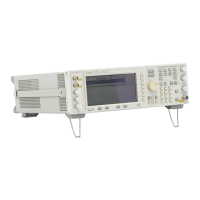
